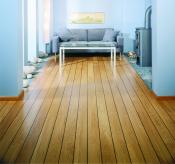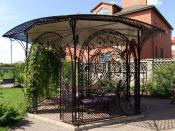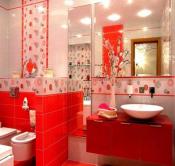Search
Login
Recommended
Wallpaper and their types
A modern interior requires a variety of building and finishing materials. Manufacturers are constantly expanding the range of finishing materials and, in particular, wallpaper. To choose the right wallpaper, you need basic information about them.
Content
- General information video video video
- Printed Wallpaper
- Embossed Wallpaper
- Washable wallpaper
- Vinyl wallpapers
- Wallpaper based on grass weaving
- Fleecy wallpaper
- Cork Wallpaper
- Paper-based fabric wallpaper
General information
The assortment of wallpapers on a paper substrate has a wide variety, due to the fact that the top layer can be from elegant exotic silk, coarse jute fabric, natural cork to weaving from grass.
The use of synthetic plastic allows you to further expand the assortment of wallpapers: vinyl wallpapers on a paper basis, non-woven or fabric basis, smooth and patterned foamed plastics are produced.
Modern technologies allow the production of fabrics without a substrate, they are glued or stretched to the wall.
Printed Wallpaper
The simplest, cheapest wallpapers are made using machine printing, one of the advantages of such wallpapers is a huge variety of colors and patterns, it is much wider than all other finishing materials.
The disadvantage of such cheap wallpapers is their fragility, but they can be changed more often without causing much damage to the wallet.
More expensive hand-made wallpapers are produced, but they are unsuitable for use in rooms with wet conditions, since paints can leak when moisture gets on them.
Such wallpapers are not suitable for pasting walls on which condensation appears, for walls subject to increased wear.
Since manual printing is less accurate than machine printing, problems may arise when selecting a pattern at the joints of pieces.
Embossed Wallpaper
Using wallpaper with a deep embossed pattern, you can hide small wall defects, if the defect is large enough, you can close it by applying stucco decoration from plaster.
After pasting, embossed wallpaper must be painted with emulsion, acrylic or semi-matt oil paint.
The first type of embossed roll finishing materials was linkcrust, consisting of a continuous film of drying oil based on linseed oil and a primer layer.
All this was applied to a paper substrate, then a pattern was made using a metal roller with a relief surface.
Such wallpapers are found in modern times, but they are replaced by embossed paper wallpapers, as well as more expensive types of wallpaper made of cotton.
Lightweight embossed vinyl wallpaper has gained a lot of popularity. In the production of such wallpapers, they are heated in an oven, while the vinyl foams and forms a deep relief pattern.
Washable wallpaper
Washable wallpapers are made by printing using a thin waterproof PVA film, they can be washed with a sponge.
Washable wallpapers are widely used for pasting bathrooms and kitchens.
In order to avoid damage to the plastic coating of the wallpaper, premature wear, these wallpapers must be washed with neutral detergents, avoiding scuffing and mechanical friction of the surface.
Vinyl wallpapers
Manufacturers created wallpaper on a paper basis (sometimes based on cotton), covered with a layer of vinyl, and subsequently a pattern is printed on it.
The production process of such wallpaper is accompanied by heat treatment.
The result of such technologies is durable washable wallpaper, such wallpaper is ideal for use in bathrooms, kitchens, rooms with high humidity.
Wallpaper based on grass weaving
Exclusive wallpapers are made from natural herbs that are woven into a mat, then it is pasted onto a paper base.
These wallpapers are environmentally friendly, create a harmonious atmosphere, very beautiful.
Wallpaper based on natural herbs has a big drawback, they are very fragile and require a lot of skill and accuracy.
Fleecy wallpaper
The main pattern of fleecy wallpapers is made from synthetic or natural pile, from silk or wool, it sticks to the base, forms a pattern in the form of a relief with a velvety surface.
Fleecy wallpaper is quite difficult to glue, due to the fact that the pile spoils from glue getting on it. This flaw was eliminated in vinyl fleecy wallpapers, they are not so gentle, they can be sold with a layer of glue and they can be glued anywhere.
Stains can be washed off with fleecy wallpapers using a sponge, but a brush must be used to remove dust.
If fleecy wallpapers are vinyl, you can just wash them.
Cork Wallpaper
Expensive, elite wallpapers - covered with thin sheets of dyed or natural cork.
Eco-friendly, comfortable, durable, they do not deteriorate as easily as other wallpapers with a special coating.
Paper-based fabric wallpaper
Wallpaper in the form of thin cotton, linen or silk fabric on a paper basis.
Such wallpaper can only be glued on a flat, perfectly flat surface.
These are expensive wallpapers, they are difficult to stick on, therefore it is recommended to use the services of specialists, since most fabrics have an expensive fragile base.
The production of wallpapers that have a plastic coating has been established, the use of which significantly increases the wear resistance of wallpapers.





